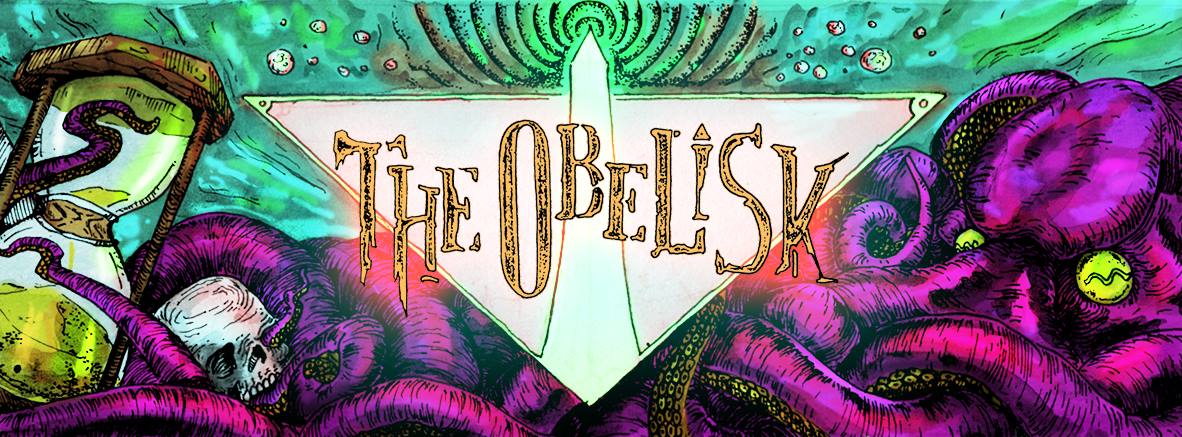Carpet, Elysian Pleasures: Spielt mit den Atomen
Posted in Reviews on July 19th, 2013 by JJ KoczanYou could teach a college class on the influences under which Carpet work. Sounding here like John Lennon fronting Adrian Belew-era King Crimson and there meandering into Floydian ambience offset by fuzzy heavy rock guitar work, the German progressive heavy rock foursome’s Elektrohasch-released sophomore outing, Elysian Pleasures, is rigorously plotted and technically accomplished. Like its cover, it is a collage, ably skirting the line of giving itself over to instrumental explorations, but never quite losing focus entirely on songwriting. This works markedly to the favor of tracks like “Elysian Pleasures,” “In Tides,” “Serpentine” and “For the Love of Bokeh,” though with richly varied parts throughout, each of the eight cuts seems to find its standout moment one way or another in the album’s total 49 minutes. The Augsburg/Munich outfit — Maximilian Stephan (guitar, vocals, clarinet, Mellotron, minimoog), Jakob Mader (drums, xylophone, glockenspiel, marimba, percussion), Sigmund Perner (Rhodes, grand piano, organ, accordion, Mellotron) and Hubert Steiner (bass) — split the songs into two sides even on the CD version of the album, and in line with the vinyl available in yellow or black with a poster and “Elysian Pleasures Textbook” lyric sheet, the individual pieces that make up the record work well with that construction, despite a linear flow that surfaces over the course of the CD taken as a whole. Such winds up being inevitable, since if the listener is going to be sucked into Carpet‘s world at all, it’s going to happen at the start, and with the variety of instrumentation the band utilize at any given moment, they establish a wide base early on, requiring the listener to keep a likewise open mind. The xylophone, in other words, appears with no delay. It practically opens the record, as a matter of fact, with Mader and Stephan announcing the arrival of Elysian Pleasures as a telling bit of fanfare plays out in the first 30 seconds. Like the best traditional prog, Carpet are patient and require a patient audience, but they do well in establishing a balance between what’s satisfying for them to play and still accessible for someone hearing it, which isn’t something that can be said across the board of the genre.
The King Crimson elements strike quickly, a bed of subtle noodling on guitar backing Stephan‘s echoing vocals as “Elysian Pleasures” begins to unfold. Ambient, jazzy and richly textured, the opener is a decent but not all-telling lead-in for the Carpet debut that shares its name, sounding modern in its production and classic in its ideology while a heavier tension lurks just below the surface later into the track as Mader rides his crash cymbal while Perner plays out the central melody on keys. It is busy from the word go and remains busy even in its quiet stretches. A subdued finish for “Elysian Pleasures” lulls the listener into a false sense of security as “Nearly Four” snare-pops its way in with a fuzzy guitar-led strut and vocals buried beneath the progression, all instruments headed in the same place anchored by Steiner for a section of insistent and showy crashes. Of course, they take the initial idea and run with it like gleeful children — half of the appeal of progressive rock is imagining how much fun the person playing it is having — but return to the main riff near the halfway mark, realizing perhaps that not every song needs to be an indulgence. Stephan is no less an able vocalist than he is a guitarist, his voice smooth and engaging before he and Perner trade solos, his own leading to a stop that once again brings back the main figure before organ closes out the proceedings and “Man Changing the Atoms” revives the Belewery, Mader taking the fore for a time to lead an instrumental section of jazz complemented by trumpet (credited to Andreas Unterreiner) in one of Elysian Pleasures‘ jazziest and most singularly enjoyable stretches. It seems to just happen — one minute Carpet are headed one way, then they turn, decide they like this better and that’s all there is to it. It’s a flagrant — almost arrogant — casting off of structure, and it could easily fall flat, but it doesn’t, and they smoothly work “Man Changing the Atoms” to an excitingly heavy build, saxophone (courtesy of Jan Kiesewetter) joining the fracas as it peaks with crashes, and just when the verse seems most like a thing of the past, vocals arrive again and renew the initial spirit of the track. Did that just happen? But for some resonant Mellotron and bass tension, it’s hard to be sure. Past six minutes in, they pick up again and end “Man Changing the Atoms” big, so it’s fitting the modus so far that “In Tides” should start quiet. And it does.






